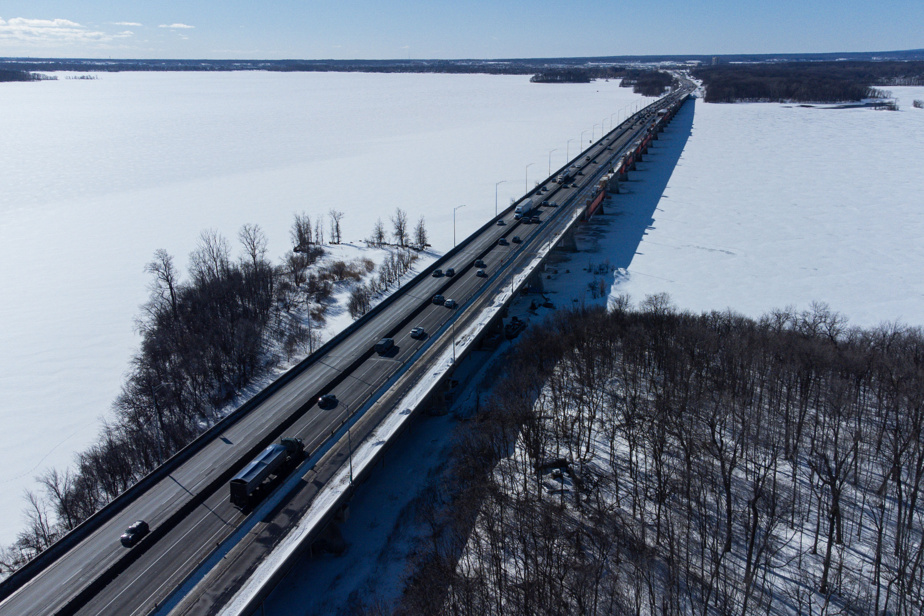Residents of Vaudreuil-Dorion and adjacent municipalities should telework for at least “a few weeks,” says the Legault government, which does not expect to reopen a third lane on the Île-aux-Tourtes bridge for a month and a half, or even two months.
” In context, [nous] Let us call on employers and workers, where possible, to be flexible and to favor teleworking for a few weeks. We are working tirelessly on solutions,” wrote the Minister of Transport, Geneviève Guilbault, on the social network X on Wednesday.
His office subsequently confirmed that the bridge will remain with two lanes – one in each direction – for another “six to eight weeks”. Until now, the Ministry of Transport had not provided a more precise timetable, simply indicating that the reopening of a third lane would be possible “after the end of the repair work on the damaged slab”.
Two lanes of the infrastructure were recently closed in quick succession due to damage to a portion of the slab and the discovery of new cracks, causing a real congestion headache for several citizens living in Vaudreuil-Dorion, Senneville or Baie-d’Urfé.
In addition to free trains and the addition of services, other solutions are on the cards in the short term, including the creation of several park-and-ride lots accompanied by shuttles to public transport services located in the area. “We are evaluating several avenues,” say those around the minister.
The government is also seriously considering reviewing the management of the two remaining roads. The idea of putting the two lanes in the same direction, during rush hours, was notably considered. A meeting is planned for this Friday between local elected officials and Geneviève Guilbault. Other measures could then be adopted. Such meetings have already been held last Saturday, Sunday and Tuesday.
Heading towards 2026… and 2027
After receiving the most recent environmental assessments from the federal government, Quebec confirmed on Monday the launch of work on the new bridge, which must be partially put into service – with five lanes out of six – in December 2026. The six lanes would then be ready at the end of 2027 The government’s stated aim, however, is to “accelerate” the work as much as possible.
Until now, the project was taking place in the “preparatory phase”. In other words, it was limited to tasks such as deforestation or moving goods. On Monday, however, the site entered the construction phase, starting with the riprap in the water which will be carried out over the coming weeks to prepare for the installation of the piles of the future bridge.
Since its unveiling, the project has experienced several cost increases. Now valued at 2.3 billion, as revealed The Press in April, the whole thing involves building a new bridge north of the current infrastructure, which will then be dismantled.
Thus, in each direction, there will ultimately be three lanes of traffic for cars and trucks, as well as a four-meter shoulder that can be used by buses. A “multi-purpose path” of the same width will be developed for bicycles and pedestrians by 2028. Ultimately, the new bridge will be around ten meters wider than the current bridge. The current bridge will be deconstructed by 2029.
